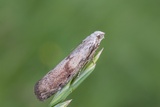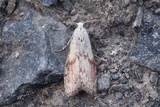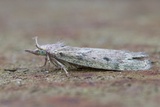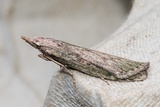Aphomia sociella (Linnaeus, 1758) Species
Last modified: Oct. 26, 2023, 2:10 p.m.
A common species throughout Belgium.
Details
- Classification
- Family: Pyralidae > Subfamily: Galleriinae > Tribus: Tirathabini > Genus: Aphomia > Species: Aphomia sociella
- Vernacular names
- Hommelnestmot (NL), Bee Moth (EN), Pyrale du Bourdon (FR), Hummel-Wachsmotte (DE)
- Synonyms
- Aphomia colonella (Linnaeus, 1758)
- First mention in Belgium
- De Sélys-Longchamps E. 1844. Énumération des insectes Lépidoptères de la Belgique. — Mémoires de la Société royale des Sciences de Liége 2: 1–35. On page 23 (as colonella). view page
- Status
-
Native
Distribution
Bionomics
The larva lives in August–September in the nests of various Hymenoptera species where it constructs white, silken-lined galleries. At first, it feeds on old cells and detritus, but later it eats also the comb and brood in the nest. There can be many larvae in one nest. The larvae hibernate.
Pupation in a white cocoon during early spring. Most of the time these cocoons are constructed gregariously inside the nest.
Adults are active from dusk onwards and later come to light.
Flight periods
Depending on weather conditions, the adults can fly from April till September, occasionally later, though some early specimens have been observed from mid-February onwards.
Observed on
- Substrates:
- Wax, Detritus, Nests of Hymenoptera and Nests of birds
At first, the larva feeds on old Hymenoptera comb and detritus, in later instars it also attacks the comb and brood.
Habitat
This synanthropic species occurs in honey-bee nests and in birds nests. In natural conditions, it lives in the ground nests of bumblebees (Bombus spp.) and wasps (Vespula spp.).




